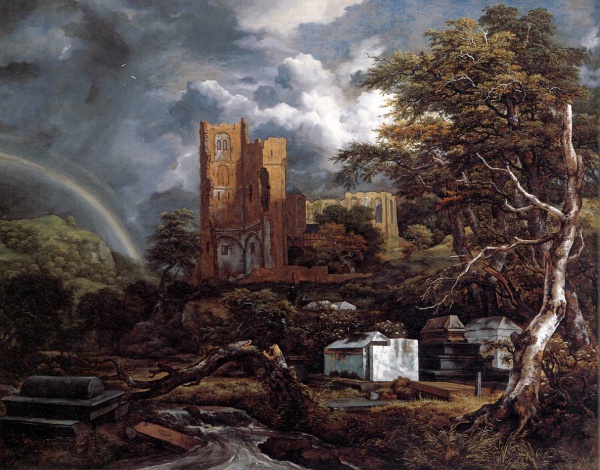Facts About The Jewish Cemetery
"The Jewish Cemetery" is a mesmerizing oil on canvas by Dutch landscape artist Jacob van Ruisdael, currently exhibited at the Detroit Institute of Arts. Painted in the 17th century, this masterpiece was first documented by art historian John Smith in 1835. The painting depicts a poignant scene of ruins—a church and convent nestled on a hill, with a cemetery sprawling below. The landscape is adorned with trees, stones, and a few figures, all contributing to a profound meditation on the human condition.
Ruisdael's work is celebrated for its emotional depth and grandeur. The painting's journey through history includes several auctions before being acquired by a Mackintosh, Esq., eventually finding its place in Detroit.
Intriguingly, "The Jewish Cemetery" incorporates elements from two real locations: the Jewish cemetery 'Beth Haim' in Ouderkerk aan de Amstel and the ruins of Egmond Abbey in Egmond-Binnen. This amalgamation of sites showcases Ruisdael's artistic ingenuity, crafting a scene that is both visually striking and rich in meaning. His talent for blending different landscapes not only set a benchmark in landscape painting but also inspired future generations of artists.

 Mexico
Mexico